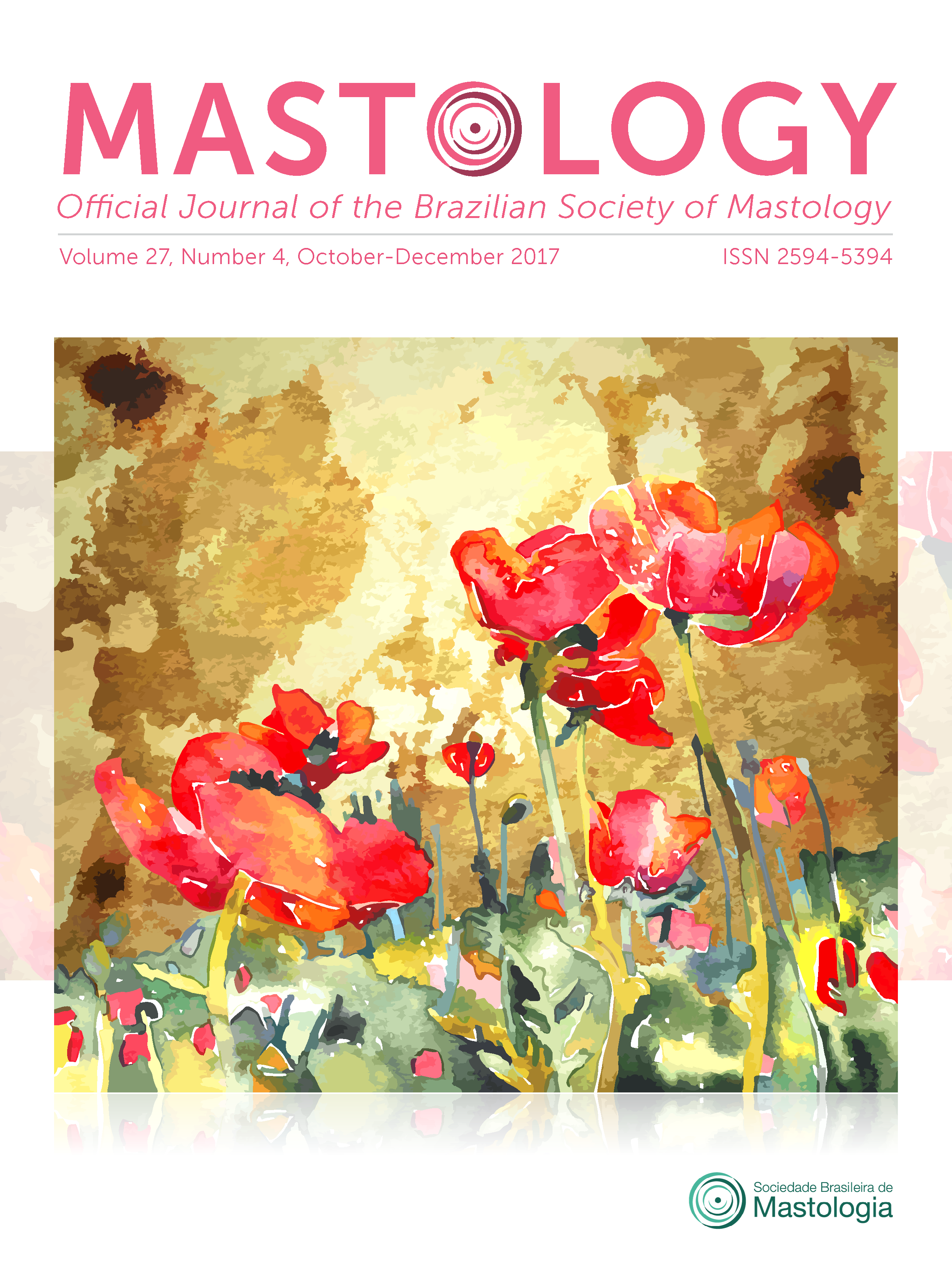VALIDATION OF NCCN CRITERIA FOR GENETIC TESTING IN HBOC SYNDROME IN BRAZIL
Keywords:
Gene, breast cancer, genetics, mutationsAbstract
Objective: To identify genetic mutations in BRCA1 and BRCA2 genes in women suspected of HBOC syndrome and to correlate them with NCCN testing criteria to verify its impact on mutation finding rates, as well as to identify the relevant criteria, the frequency and type of found mutations and the relative importance of each NCCN criteria. Methodology: A database with all the cases tested for HBOC by the second author from 2010 to 2016 was built, and the variables of interest were annotated and then analyzed with a statistical package to find the relevant variables. Results: A total of 171 patients was tested and 38 had deleterious mutations (22%). Criteria with significant association to the present mutations were the total numbers of relatives with cancer (p=0.02) and Ashkenazi lineage (p=0.001). Age of the youngest relative with cancer below 49 was not significant in this sample (p=0.1). There is a strong correlation between mutated patients and NCCN criteria (p=0.0001), but we found no such correlation between the presence of NCCN testing criteria and the presence of mutation (p=0.11). Regarding the use of NCCN criteria to find BRCA mutations, sensitivity was 0.947, specificity was 0.068, PPV was 0.225 and NPP was 0.818. Accuracy was 0.263. Conclusion: The incidence of BRCA1 and BRCA2 deleterious mutations in our study was similar to that found in other populations. NCCN criteria were a poor predictor of deleterious mutation in BRCA1 and BRCA2 in general, although most mutant patients had at least one NCCN testing criteria, specially increasing number of affected relatives and Ashkenazi lineage.
Downloads
References
Brasil. Instituto Nacional de Câncer (INCA). Estimativa 2016 [Internet]. 2016 [cited 2017 June 26]. Available from: http://www.inca.gov.br/estimativa/2016/sintese-de-resultadoscomentarios.asp
Yiannakopoulou E. Etiology of familial breast câncer with undetected BRCA1 and BRCA2 mutations: clinical implications. Cell Oncol (Dordr). 2014;37(1):1-8. DOI: 10.1007/s13402-013-0158-0
Kuchenbaecker KB, Hopper JL, Barnes DR, Phillips KA, Mooij TM, Roos-Blom MJ, et al. Risks of breast, ovarian, and contralateral breast câncer for BRCA1 and BRCA2 mutation carriers. JAMA. 2017;317(23):2402-DOI: 10.1001/jama.2017.7112 Carraro DM, Folgueira MA, Lisboa BC, Olivieri EH, Krepischi AC, Carvalho AF, et al. Comprehensive analysis of BRCA1, BRCA2 and TP53 germline mutation and tumor characterization:
a portrait of early-onset breast cancer in Brazil. PLoS One. 2013;8(3):e57581. DOI: 10.1371/journal.pone.0057581
Gomes MC, Costa MM, Borojevic R, Monteiro AN, Vieira R, Koifman S, et al. Prevalence of BRCA1 and BRCA2 mutations in breast cancer patients from Brazil. Breast Cancer Res Treat. 2007;103(3):349-53.
Myriad. Prevalence tables of deleterious mutations in BRCA1 and BRCA2 [Internet]. [cited 2017 June 26]. Available from: http://myriadgenetics.eu/healthcare-professional-treatingdiseases/hereditary-cancer-testing/hereditary-breast-andovarian-cancer-hboc-syndrom/prevalence-tables/
Downloads
Published
How to Cite
Issue
Section
License
Copyright (c) 2017 Andre Vallejo da Silva, José Claudio Casali da Rocha, Guilherme Olivetti Guarneri

This work is licensed under a Creative Commons Attribution 4.0 International License.







